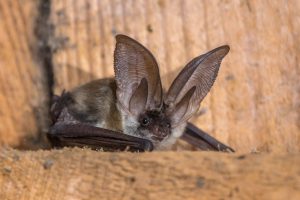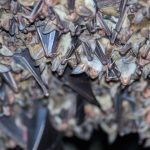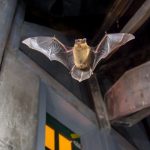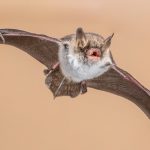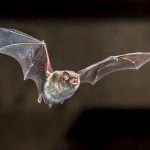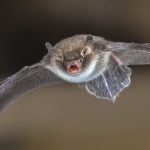Yes. There are species of bat that live entirely on blood-drinking it from a variety of animals. And Yes, some also feed/drink off humans.
Do Bats Drink Blood: Human Blood?
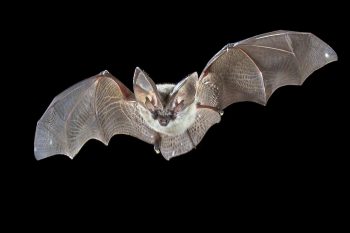
There are always the stories of blood-drinking bats – especially in horror movies – but do they actually exist? Are there blood-drinking bats that actually feed off of humans?
Well, yes. Yes, there are.
Vampire bats are real-life blood drinkers. Blood is literally all that they eat and the only thing they can digest properly. Drinking blood actually counts as being a ‘parasite’ as they are living off the tissues of another live animal – at a loss to the host species.
There are three species of blood-sucking vampire bats in the world – and they all have their preferred source of blood:
- Common Vampire Bat – Large Mammals – including humans
- Hairy-Legged Vampire Bat – Birds and Goats
- White-Winged Vampire Bat – Mainly Birds
These bats actively go out and hunt for blood at night – looking for sleeping victims. Stealthily walking or hopping along the ground until they get close enough to bite – they are some of the only bats that can run.
Armed with infra-red heat-seeking senses – they aim for the spot on the sleeping cow or human – where the blood is closest to the surface. With razor-sharp teeth, they break the skin and start feeding – lapping up the blood fast.
They can drink up to 20g of blood in a session – which is often around half their body weight – feeding for about 20 minutes. They have evolved a highly specialized digestive system to allow for this rapid increase in fluids. Within minutes the water from the blood is excreted so that they are able to fly away fast – to rest up and have an after-dinner nap.
Where Do Vampire Bats Live?
These true vampire bats live only in Central & South America – from Mexico down to Argentina. They are what is known as New World Leaf-Nosed Bats – and these three species are the only species to live on the blood of live animals.
There are other bats called vampire bats but they don’t drink fresh blood on their own – they are large animal carnivores. These bats hunt, catch and kill large animals such as rodents, birds, and other bats.
The Spectral Bat lives in the same habitat range as the true Vampire Bats but is the largest carnivorous bat in the world – with a wingspan of over 3ft.
There are three species of ‘false’ Vampire Bats in South East Asia and Australia:
- Greater False Vampire Bats
- Lesser False Vampire Bats
- Ghost Bats (Australian False Vampire Bat)
The Greater and Lesser False Vampire Bats are similarly leaf-nosed bats – but catch and eat whole food – not just the blood. They catch small birds, rodents, fish, and other bats too.
Finally, the Ghost Bat (or Australian False Vampire Bat) is only found in Australia and will catch a huge variety of small prey – including birds and bats on the wing.
Can You Catch Rabies From Vampire Bats?
Yes, Unfortunately – just like with any blood-borne disease – you can catch rabies from bat bites if you are unlucky. Only around 0.5% of bats have rabies in the first place, and those that do are usually very disoriented and unable to fly very far. Very unlikely to infect humans.
However, it does happen and there are many documented cases of humans contracting rabies after a known bat bite.
There is far more risk though from dogs and cats – than there is from bats. Saying that though, most deaths from rabies occur with bat bites, because they often go unnoticed and so the patient doesn’t go to a hospital for treatment before the symptoms start.
Can Bats Be Vegetarian?
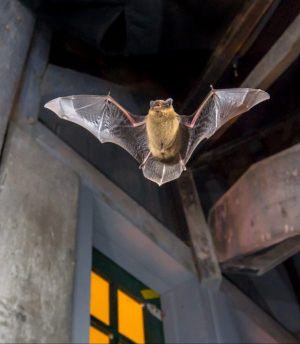
Yes, Absolutely. Many species of bats are vegetarian – or frugivorous to be precise. They mainly eat fruit, but most will eat pollen, sap, buds, flowers, shoots, and leaves. In Australia, they LOVE the eucalyptus flowers which are an important food source for these colony-living species.
Often called ‘megabats’ (around 3.5lbs and with a 5ft wingspan) or Flying Foxes – these plant-based bats are found all across the Old World, on and south of the equator. Mainly active at night, they will travel great distances to find ripe fruit using their amazing sense of smell. to locate ripe sources.
Makes you wonder why do bats drink blood – when ripe guava is so much tastier?

